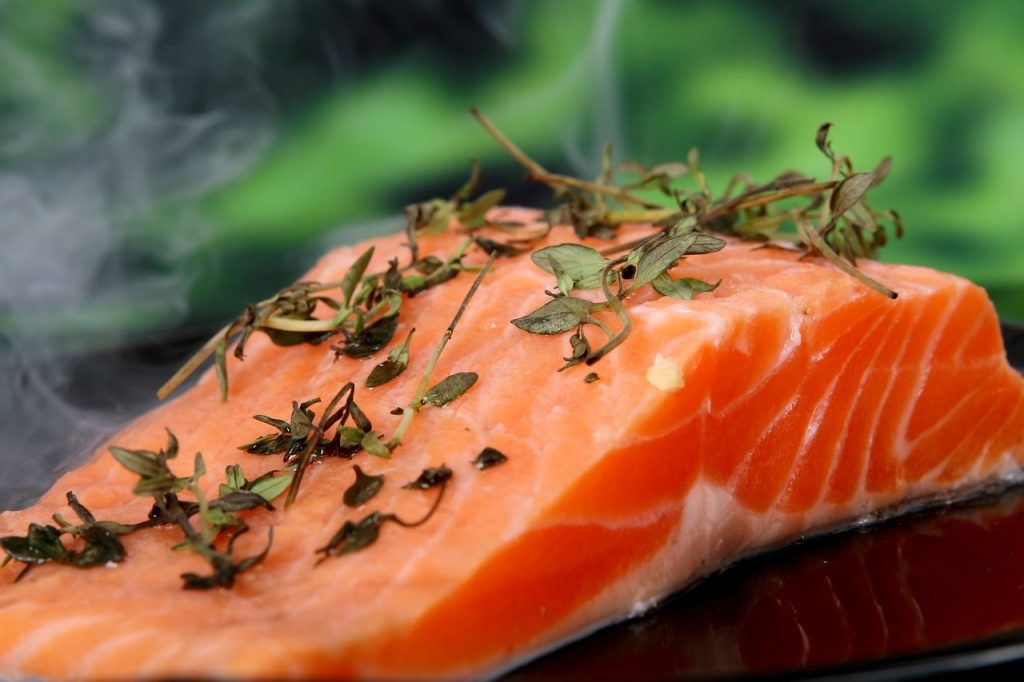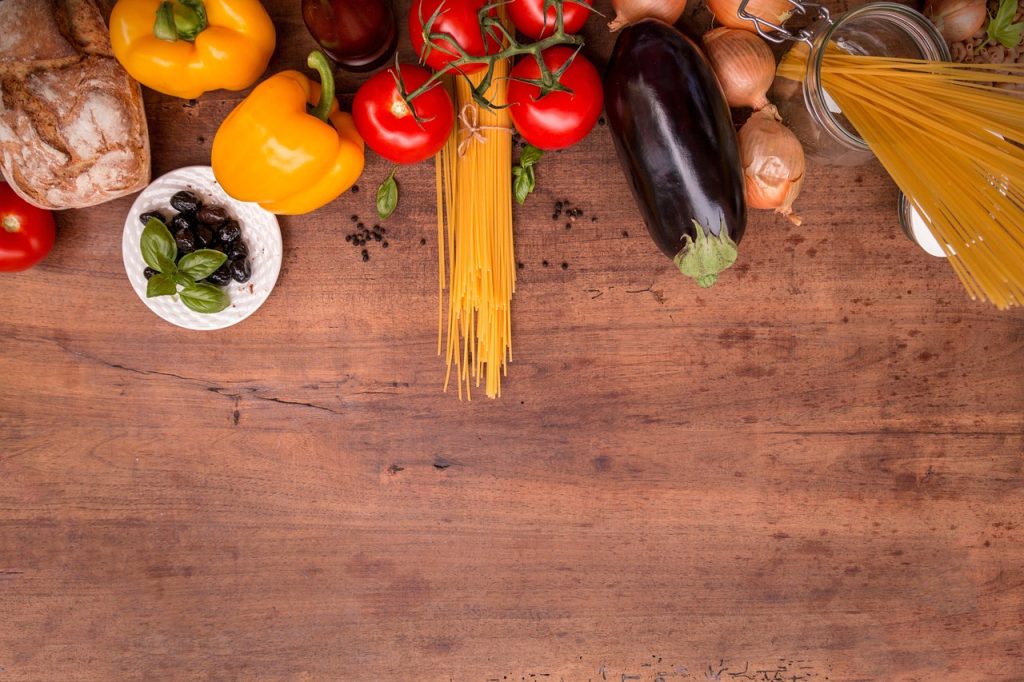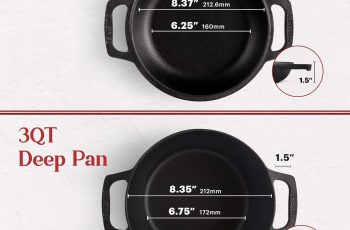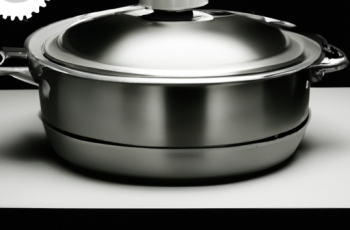Ad Blocker Detected
Our website is made possible by displaying online advertisements to our visitors. Please consider supporting us by disabling your ad blocker.
In the culinary world, mastering the art of perfectly tender meats is a skill that elevates any chef’s expertise. One technique that has revolutionized the cooking process is pressure cooking. Through the power of steam and high pressure, pressure cooking yields succulent and tender meats in a fraction of the time compared to conventional methods. This article delves into the intricacies of pressure cooking, exploring the science behind this cooking technique and providing valuable tips to achieve impeccable results. Whether you’re a seasoned chef or an aspiring home cook, understanding the art of pressure cooking will undoubtedly transform your culinary endeavors.
Choosing the right cut of meat
When it comes to pressure cooking, choosing the right cut of meat is essential for achieving perfectly tender results. Two factors to consider when selecting a cut are cooking time and flavor.
Consider lean cuts for quicker cooking times
If you’re short on time and want to enjoy a meal without compromising on taste, lean cuts of meat are the way to go. Lean cuts, such as tenderloin or chicken breast, cook more quickly in a pressure cooker. This makes them ideal for busy weeknight dinners or when you’re craving a satisfying meal in a shorter amount of time.
Opt for tougher cuts for more flavorful results
On the other hand, if you’re looking for rich and flavorful results, opting for tougher cuts of meat like chuck roast or pork shoulder is a great choice. These cuts typically have more connective tissue and require a longer cooking time to break down and become tender. The pressure cooker’s high pressure and heat help to achieve that desired tenderness and deliver succulent, melt-in-your-mouth meat.
Preparing the meat
Before placing the meat in the pressure cooker, it’s important to properly prepare it for cooking. This preparation not only enhances the flavors but also ensures that the meat cooks evenly.
Trim excess fat and connective tissue
Trimming excess fat from your meat is crucial as it helps to avoid greasy and overly oily results. Too much fat in the pressure cooker can also lead to a buildup of grease, preventing proper steam generation and potentially affecting the final flavor. Similarly, removing any tough connective tissue promotes tenderness and ensures a more enjoyable eating experience.
Season with your preferred herbs and spices
Seasoning the meat with your preferred herbs and spices is an important step in enhancing its flavor profile. Whether you prefer a simple salt and pepper seasoning or a more complex blend of spices, adding them to the meat before pressure cooking allows the flavors to infuse and penetrate deep into the meat. This infusion of flavors helps to create a well-seasoned and delicious end result.

Using the right amount of liquid
When pressure cooking, it’s crucial to add the right amount of liquid to facilitate the steam generation process. Adequate liquid ensures that the pressure cooker reaches and maintains the correct pressure, allowing the meat to cook properly.
Add enough liquid to generate steam
To ensure steam generation, it’s important to add enough liquid to the pressure cooker. This liquid can be in the form of stock, broth, wine, or water, depending on the recipe and your preference. The amount of liquid required may vary depending on the recipe and the size of the pressure cooker, so it’s essential to follow the specific instructions provided.
Avoid adding too much liquid to prevent dilution of flavors
While it’s important to add enough liquid for steam generation, it’s equally crucial not to use an excessive amount of liquid. Adding too much liquid can dilute the flavors of the meat and other ingredients, resulting in a less intense and less flavorful dish. It’s important to strike a balance and use the recommended amount of liquid for the best results.
Properly sealing the pressure cooker
A properly sealed pressure cooker is vital to ensure that the cooking process is efficient and safe. Checking the condition of the rubber gasket and identifying any leaks or damage in the pressure release valve are critical steps in achieving a successful pressure cooking experience.
Ensure the rubber gasket is in good condition
The rubber gasket, also known as the sealing ring, plays a crucial role in creating an airtight seal and maintaining pressure inside the cooker. Before using the pressure cooker, it’s important to inspect the gasket for any signs of wear or damage. If the gasket appears cracked, torn, or hardened, it should be replaced to ensure a proper seal.
Check for any leaks or damage in the pressure release valve
The pressure release valve is responsible for regulating the pressure inside the cooker and ensuring it doesn’t exceed safe levels. It’s essential to inspect the valve for any signs of leaks, clogs, or damage. If any issues are detected, the valve should be repaired or replaced before using the pressure cooker to prevent potential safety hazards.

Setting the cooking time and pressure
Properly setting the cooking time and pressure is critical to achieve the desired level of tenderness in the meat. Different meats require varying cooking times and pressure levels, so referring to recommended guidelines and adjusting accordingly is key.
Refer to the recommended cooking times for different meats
To ensure perfectly cooked meat, it’s important to refer to recommended cooking times for different cuts. Certain cuts, such as chicken breasts, may only require a few minutes of cooking time, while others, like a pot roast, may need several hours. By following these recommendations, you can ensure that the meat is not undercooked or overcooked, leading to optimal tenderness and flavor.
Adjust the pressure level based on desired tenderness
In addition to cooking time, the pressure level also plays a role in achieving the desired tenderness of the meat. Most pressure cookers offer multiple pressure settings, such as low, medium, and high. Adjusting the pressure level based on your preference and the meat being cooked allows for customization and control over the final results.
Allowing for natural pressure release
Once the cooking is complete, properly releasing the pressure is crucial to maintain the texture and tenderness of the meat. There are two methods for releasing pressure: natural release and quick release.
Wait for the pressure to naturally release for tender results
Natural release involves allowing the pressure cooker to depressurize on its own without any intervention. This method is particularly suitable for cuts of meat that benefit from additional cooking time, such as larger roasts or tougher cuts. Allowing the pressure to naturally release results in meat that is tender and succulent, as it has had more time to break down and become tender.
Use quick-release method for time-sensitive dishes
For time-sensitive dishes or when you want to halt the cooking process once the designated time is up, the quick-release method can be used. This involves manually releasing the pressure by carefully opening the pressure release valve. However, it’s important to exercise caution as the steam released can be hot and may cause burns. Quick-release is an effective method for preventing overcooking and achieving the desired level of doneness.

Testing for doneness
Testing the meat for doneness is a crucial step in ensuring that it is cooked to perfection. This can be done by checking the internal temperature and ensuring that it is tender and easily falls apart.
Use a meat thermometer to check internal temperature
Using a reliable meat thermometer is the most accurate way to determine the internal temperature of cooked meat. Different meats have different recommended internal temperatures to ensure they are safe to eat. By inserting the meat thermometer into the thickest part of the meat, you can ensure that it has reached the appropriate internal temperature for doneness.
Ensure the meat is tender and easily falls apart
In addition to checking the internal temperature, it’s important to ensure that the meat is tender and easily falls apart. This can be done by using a fork or tongs to gently pull apart a small portion. If the meat is tender and separates easily, it is a good indicator that it has reached the desired level of tenderness. If it feels tough or requires significant effort to pull apart, it may need additional cooking time.
Resting the meat
Allowing the meat to rest after cooking is essential to retain its juices and ensure an optimum dining experience. Resting the meat allows the juices to redistribute, resulting in a more flavorful and moist end result.
Allow the meat to rest before slicing or serving
When the meat is removed from the pressure cooker, it’s important to let it rest for a few minutes before slicing or serving. This rest period allows the natural juices to be absorbed back into the meat, resulting in enhanced flavor and juiciness. Resting time can vary depending on the size and type of meat, but typically 5-10 minutes is sufficient.
Cover the meat to retain moisture during resting
To retain the moisture and tenderness of the meat during the resting period, it should be covered with foil or a lid. This covering helps to trap the heat and allows the meat to continue cooking slightly while resting. By keeping the meat covered, it will stay warm and succulent until it is ready to be sliced or served, ensuring an enjoyable dining experience.
Enhancing flavors with additional ingredients
While pressure cooking already intensifies the flavors of the meat, incorporating additional ingredients can take it to the next level. Experimenting with marinades, sauces, and aromatic vegetables or spices can add depth and complexity to your pressure-cooked meals.
Experiment with different marinades and sauces
Marinating the meat before pressure cooking is an excellent way to infuse it with extra flavor. Whether you prefer a tangy barbecue sauce, a zesty citrus marinade, or a savory soy-based glaze, marinating allows the flavors to penetrate deeply into the meat. You can also drizzle sauces over the cooked meat once it is done to further enhance the taste.
Add aromatic vegetables or spices for extra depth of flavor
Incorporating aromatic vegetables or spices into the pressure cooker can add a whole new dimension of flavor to your meat dishes. Ingredients such as onions, garlic, ginger, and herbs like rosemary, thyme, or bay leaves can provide additional depth and complexity to your recipes. These flavorful additions infuse the meat with their essence, creating a truly memorable culinary experience.
Adapting recipes for pressure cooking
One of the great advantages of pressure cooking is its versatility in adapting traditional recipes. With a few adjustments, you can convert your favorite slow-cooker or stovetop recipes into pressure cooker-friendly dishes.
Convert traditional recipes to pressure cooker-friendly versions
To convert a traditional recipe for use in a pressure cooker, you’ll need to make some modifications. Start by adjusting the cooking time, as pressure cooking is generally faster than other methods. You may also need to modify the amount of liquid used to achieve the desired consistency and prevent the dish from becoming too watery or dry. It may require some trial and error, but the result is a much quicker and convenient meal without sacrificing taste.
Adjust cooking times and liquid ratios accordingly
When adapting a traditional recipe for pressure cooking, it’s important to adjust the cooking times and liquid ratios accordingly. Consult a pressure cooker recipe conversion guide or refer to similar pressure cooker recipes to ensure you are using the correct parameters for your specific dish. By doing so, you can ensure that the meat cooks to perfection and all the flavors meld together, resulting in a delicious and satisfying meal.
In conclusion, by following these guidelines for choosing the right cut of meat, preparing it properly, using the correct amount of liquid, sealing the pressure cooker, setting the cooking time and pressure, allowing for natural pressure release, testing for doneness, resting the meat, enhancing flavors with additional ingredients, and adapting recipes for pressure cooking, you can unlock the art of creating perfectly tender meats with your pressure cooker. With practice and experimentation, you will be able to prepare delicious and tender meals that will impress family and friends. Happy pressure cooking!

